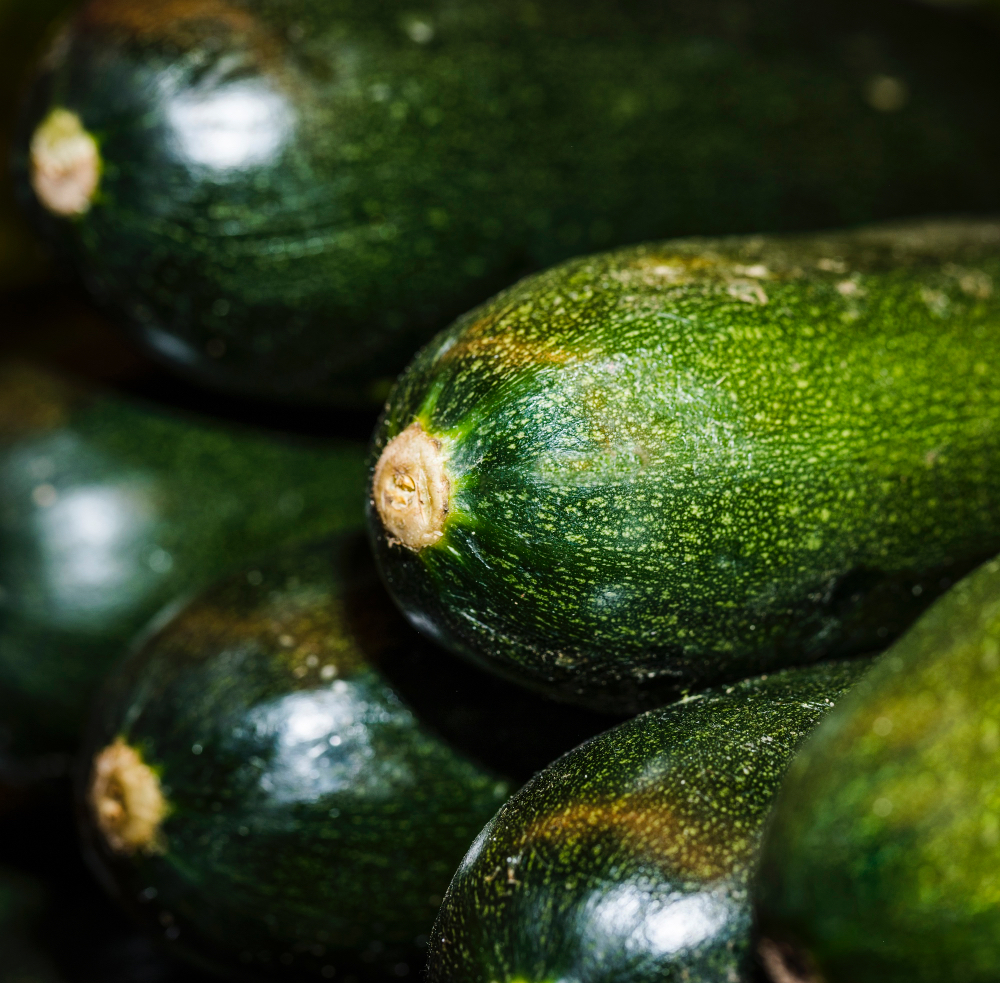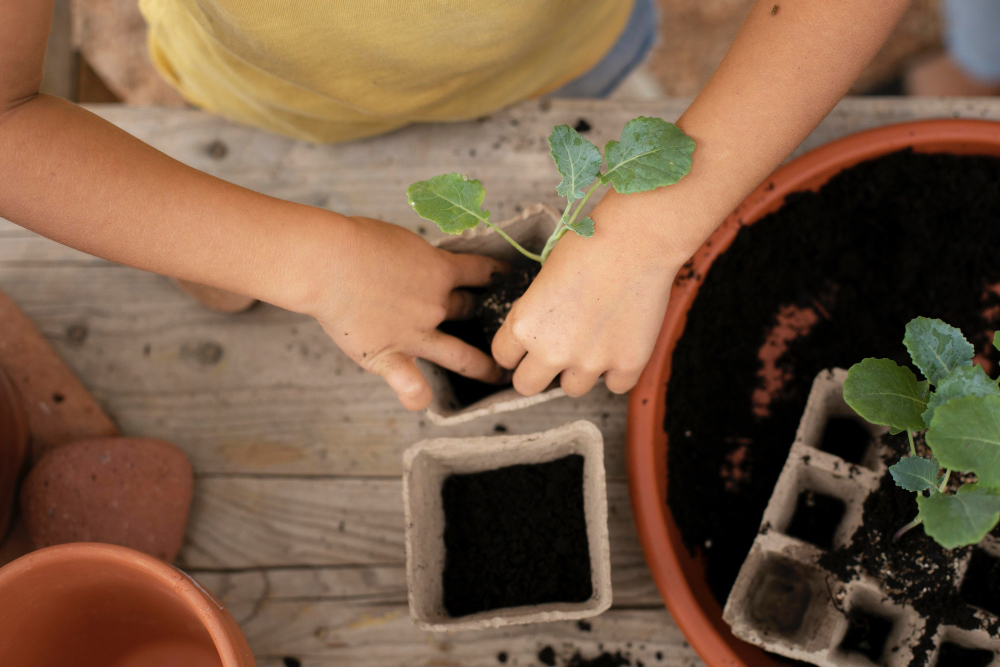When I was a child, my mother was on welfare. There were stretches of time when all we had to eat came from the garden. We called those the zucchini days. Zucchini muffins, fried zucchini, bread with… you guessed it! Protein was rare. A dozen eggs had to last for weeks. And yet, even inside that poverty, my mother found ways to make the scarcity feel softer. She made jokes and was always harvesting and cooking, trying to keep nourishing us, while growth spurts made us thinner and grumpy.
I see the same look my mother had, in teachers today. Desperate and optimistic, working their hands raw trying to keep kids full, loved, learning.
We are in a famine..

What starvation looks like in the school system
A teacher glances at the clock—twelve minutes into the morning and already three crises deep, with no backup and no way out. A child’s meltdown spreads through the room—sensory overload turning into collapse—while staff improvise calm voices they no longer feel. Children can tell if you’re bluffing, especially the sensitive ones. A long list of unreturned emails flits through the teacher’s mind and social obligations tonight, compacting time and making it all implausible.
There’s not enough time, staff, or space to breathe. Educators stretch themselves thin—patching emotional holes with their own nervous systems—because there is no other option. And still, the day is only half over.
What the famine demands
This is not the natural result of complexity—it is the intentional result of policy drift, leadership evasion, and the normalisation of suffering beneath a rhetoric of resilience. The system does not collapse all at once—it erodes by design, through budget decisions, staffing cuts, and the slow abandonment of anything that cannot be easily measured or monetised.
Teachers are told to manage—without support. Parents are told to trust—while the data contradicts the reassurance. Children are told to behave—while their bodies signal stress, threat, confusion. And anyone who asks for something better—something human—is labelled difficult, demanding, disruptive.
Hunger remakes us.
Values negotiated
When I first became a parent, I thought I could pretend to be regulated too. I thought I could smile serenely, control my breathing, use coaxing words, and everything would be okay. But with worries dancing up and down your spine like fire ants—and kids screaming simultaneously—niceness is not a panacea.
Inevitably a breakdown is waiting around the corner—mine or my child’s—and then comes something shitty: yelling, crying, dissociation. Mommy takes a walk while Daddy tries to cope. The centre cannot hold, growing hotter and more pressurised, and all my best intentions go out the window. I try anything—repent, read books, seek professionals—but just two autistic kids is apparently enough to make me cry every day and feel like the shittiest, stupidest, most horrible person alive. There are many dark nights of the soul because I’m apparently incompetent at supporting only two children.
I didn’t know it then, but here’s the thing: my kids have needed more than one adult to support them all the way along, and I am only one person. When my partner was working, I was stretched impossibly. Our nanny got sick all the time from stress. They needed one-to-one in kindergarten—and they got one person stretched so thin, I could barely understand how she stayed upright.
-
This broke me: a parent’s experience of school advocacy
Parenting is not a monolith. Neither is disability. Every family walks a different path, shaped by bodies, resources, identities, and institutions. This piece reflects one perspective—mine—as a disabled parent navigating systemic harm, health collapse, and the fierce love that remains. It is not…
I nourish them
I don’t know how teachers do it—how they carry so much for so many children without the anchor I have. My motivation comes from a love that began in my womb, strengthened by baby fingers curling around mine, by butterfly kisses on my cheek, by the soft glow of bedtime stories and the endless repetition of favourite songs. I have been shaped by their laughter, their needs, their awe. I have seen every version of their face. That intimacy fuels my persistence.
With teachers, they often see my kids under duress. They meet my canary children—little birds with fast heartbeats—already stressed, masking, and sensing that something is off. They weren’t made for this, with nervous systems on high alert. I’ve accommodated their needs since infancy, because intuitively, I’ve known their hunger for soft lights, gentle fabrics, and connection. We’ve built a trust founded on small acts of devotion, feeding their psyches with wondrous knowledge, delicious snacks, and a gentle pace to match their temperaments.
But in classrooms, the lights are bright and the clocks are loud and the days move fast, too fast—and the teachers, however kind, are not the ones who rocked them to sleep or whispered the names of stars into their hair. They are strangers trying to manage too much. And so my children become smaller, harder, less themselves. They flinch before a tone is even raised. They brace for the rupture before it arrives.
The teacher sees the shutdown, but not the ten thousand micro-adjustments that held things together that morning—the tags cut off shirts, the snack packed just right, the ritual of goodbye words said in the right order. That scaffolding is invisible. And when it collapses, my child does too. Not out of defiance, but from depletion. Not to disrupt, but to survive.

So many mouths
And yet we expect them to hold space with the same devotion—to keep showing up for every child with the same patience, the same tenderness, the same attunement—as if love can be summoned on demand, without the roots that grow that kind of resolve. We expect it under fluorescent lights, in overcrowded classrooms, with no sanctuary and no reprieve. We ask them to pour from a cup that is cracked and half-full, and when it runs dry, we measure them against ideals that no one can meet under these conditions.
It is too much. And it is not fair.
So I get it—collective punishment, a sugary prize for compliance, timeouts for every rule infraction—those all make sense to me if you’re trying to manage twenty-six children, which sounds wildly impossible. These are not failures of character. They are artefacts of exhaustion. They are the strategies of people surviving inside systems that treat care as a luxury, regulation as an individual responsibility, and disruption as a personal flaw rather than a signal of systemic failure.
I don’t want you to be in this position. I don’t want to be in it either. I’ve railed against the material reality of capitalism, against the scarcity politics that pit families against teachers and children against each other, against this famine of forethought we are witnessing—where funding is withheld, support is rationed, and the burden of broken policy is passed off as personal responsibility.
What we should be doing instead
We must stop pretending this is about individual failure—about teachers who just need better strategies, or parents who need to advocate more “constructively,” or children who need to try harder to stay seated while their bodies scream for movement, regulation, relief. That story is convenient. It protects the architecture of neglect.
Teaching, under these conditions, must feel like pulling a blackberry bramble through your heart—slowly, painfully, each thorn a child you care about, each tug a reminder that love alone cannot fix a system designed to bleed you dry.
We must start talking about design—systems meticulously constructed to appear inclusive from afar but calibrated to reward conformity, punish deviation, and pathologise any child who does not fit the mould fast enough to keep up.
We must stop sanctifying survival. Forced resilience is not a virtue; it is evidence of harm. “Doing more with less” is not the best—it is a red flag, a policy failure, a slow bleed turned sacrament. We must stop asking people to earn care by enduring its absence, stop treating “wait and see” as neutral when it is, in practice, a form of abandonment. Deferred support is still denial.
And we must stop punishing children for the predictable, preventable outcomes of adult inaction. Behaviour charts, hallway removals, group consequences—these are not trauma-informed. They are resource stand-ins. They are the aesthetics of control where care should be. They break trust faster than any meltdown ever could. They are not repair. They are refusal in disguise.
-
Is collective punishment trauma-informed?
Collective punishment is fundamentally incompatible with trauma-informed practice. Trauma-informed practice begins with the assumption that many children have often experienced adversity—not always visible, not always disclosed—and that (1)safety, (2) trust, (3) choice, (4) collaboration, and (5)empowerment must guide every interaction. Collective punishment ignores…
The slow work of trust
No one tells you how long it takes to build trust with a child whose nervous system has been shaped by fear—especially if they’re autistic, especially if they’ve been punished for things they couldn’t help, especially if the people they were supposed to rely on were overwhelmed, under-resourced, or sometimes cruel. Trust, for these children, is not earned by degrees or credentials or kind smiles—it’s earned by consistency, attunement, and the smallest signals of safety, repeated a hundred times without fail. If you lose your shit even once, they’re wincing every time you try to engage them.
You can’t fast-track trust by being “inclusive” or “positive” in your language. You don’t get to demand it because you’re exhausted, even if you are—because the child is more exhausted. They are trying to survive the maze of contradictory signals and loud expectations and fluorescent lights and surprise fire drills and too-tight waistbands and chairs that squeak when no one else hears it. They are trying to read faces while ignoring the buzzing in their own skin. They can do well, if they can.
When a child like that finally relaxes their shoulders in your presence, or says what they really feel, or dares to melt down instead of holding it in until they’re home—that is not defiance. That is trust, and it is hard-won.
And when you punish them for it—even gently, even politely, even in the name of “consistency”—you don’t just break the moment. You break the thread. You confirm the fear. You send them back into themselves, into the place where no one is safe and everything hurts and the only control they have is to shut you out.
Planting a seed
I am not blaming teachers. I have cried every night for weeks trying to parent two kids with nervous systems on fire. I have begged professionals for help and been told to wait. I have read the books. I have tried the charts. I have curled up in shame after losing my temper and thought, maybe I am the problem. I know how easy it is to slip from compassion to control when you are afraid of losing your own mind.
But I also know that we don’t punish our way to safety. We don’t earn peace through obedience. We don’t teach trust by threatening its withdrawal.
I want better for you, me, and my children.
We must say no to the locked cupboards and the policies that starve us of care. To the leadership that rewards itself while we try to survive on crumbs.
I am planting something else and I hope you’ll garden with me.









